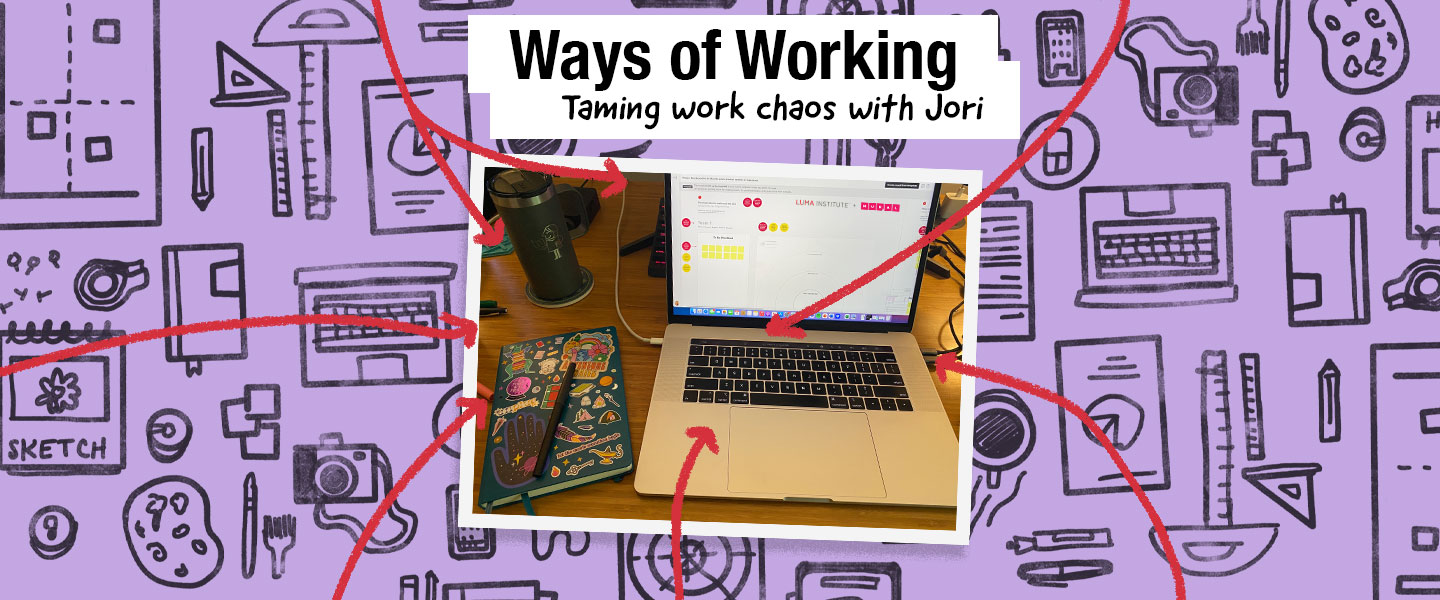Sometimes work feels chaotic. That chaos tends to knock us off balance, away from what matters most. This is true in everyday life, especially in times of great change and transition — even when what’s to come is exciting and hopeful!
I spend a lot of energy balancing obligations, tasks, and requests that are beyond my core responsibilities. I spent some time reflecting on the topic of “taming the chaos of the work week” using one of my favorite problem framing methods, Problem Tree Analysis. I explored several effects (the branches) and causes (the roots) around this focal problem: “My work week is sometimes so chaotic that I feel like I rarely get anything worthwhile done.”
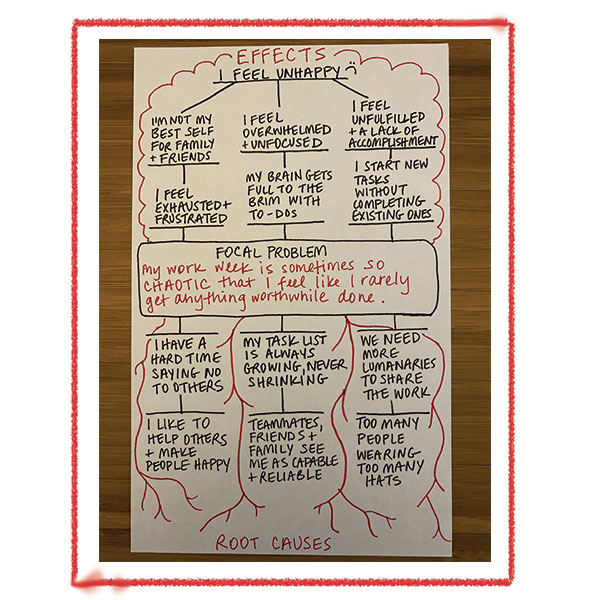
What I realized in this self-exploration was a hard truth: we’ll probably always have a to-do list for the rest of our lives (cue sound of hearts breaking) 😭
I will always have some mix of goals and tasks that I set for myself, plus those that others ask of me or expect me to complete (personal and professional, big and small).
When we get swept up in the overwhelming chaotic storm of the “to do,” “could do,” “should do,” and “please help me with this,” the clear path to meaningful work and worthwhile goals gets muddy.
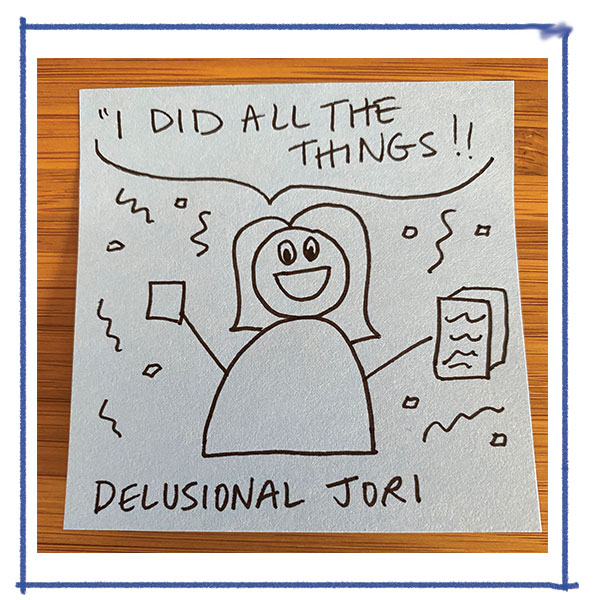
If we treat time like a finite currency, each minute and hour we spend on X means we no longer have that time to spend on Y. That opportunity cost has a direct impact on our ability to chase — and catch! — the often-elusive ✨ Productive Me. ✨ Like a frustrating game of Pokémon where the Poké Ball keeps failing to capture what we really want and need. Like trying to throw a dart at an ever-moving target 🎯
I personally view productivity as an outcome of an intentionally and thoughtfully-designed routine that enhances your ability to adapt to ANYTHING that’s thrown your way, so you can minimize the negative impact on your goals and momentum.
The good news is that there are SO MANY ways you might tame weekly work chaos for more focus, intentionality, and accomplishment! And, in the process, achieve a 😀 Happier Me. 😀
There is hope for the plannaholic, the spontaneous one, the perfectionist, and the rebel — remember, success is found through experimentation. I am happy to share some behaviors, routines, and rituals that have helped me cut through the clutter within my LUMA life, based on many years of iterations guided by failure and success.
🌟 Focus on importance over recency
With every start to the work week begins a new cycle of the “recency trap.” This is the notion that, despite your most diligent efforts, whatever gets your attention first will be what you feel most obligated to work on. Like right now. NOW I SAID! Even more disruptive is when another person’s “fire” (real or perceived) becomes your fire to help put out… 🔥
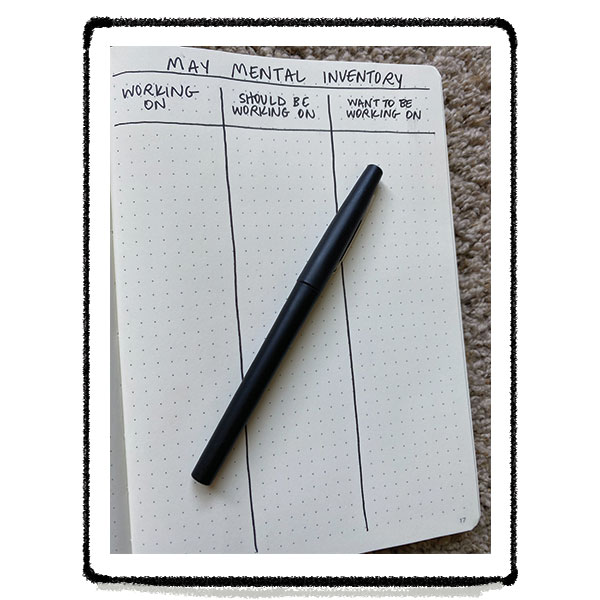
Because of this, I do my best to list my primary “north star” tasks for the day while sipping my tea BEFORE opening email and looking at Slack channels. Sometimes, I will not even power on my computer until that is done. This gives me “battle armor” against reactionary tasks and well-intentioned requests for my time, energy, and brain power, and the power to stay focused on my priorities (most of the time).
I also find that doing some kind of “mental inventory” each week or month can help me shine a light into the forest of work to walk the path toward what’s most vital.
From there, I will take any recent task and ask myself, “Does this need to be done today?”
- If it does, I add it to my to-dos for the day and adjust.
- If not, I either add it to my monthly task list for another time, or create a reminder or deadline to be timely in my follow up.
🔭 Keep your priorities clear at all times
Early in my career, I had flip charts on the wall of my cubicle with LUMA methods like Bull’s-eye Diagramming and Importance/Difficulty Matrix to help me prioritize and organize my individual tasks.
With each iteration, I played around with exploring changing one axis to “urgency” (was too stressful after a while), as well as adding helpful labels to each ring of the radar, such as “today,” “this week,” “this month,” and “maybe later.”
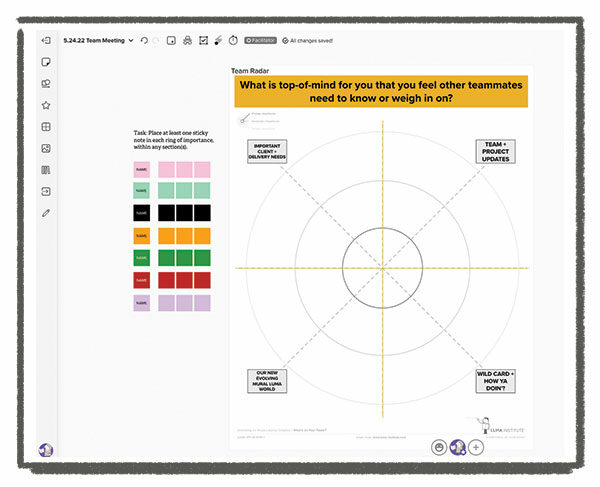
Fast forward to today, where I use a mix of different physical and virtual tools, starting each day off with activities like:
- Spending a moment to complete a “two minute morning” journal exercise. This is when I complete three phrases: “I will focus on…”, “I am grateful for…”, and “I will let go of…” to start my day off with positive energy and intention.
- Creating my daily log in my Bullet Journal, marking things off as I complete them.
- Reviewing team Trello boards, Bull’s-eye Diagrams, and What’s On Your Radar? workspaces in MURAL to review updates on projects and to add my own.
⚡ Know your energy highs (and lows)
I’m a firm believer in the phrase “you manage what you monitor” from Gretchen Rubin’s Habits Manifesto list in Better Than Before. One thing worth monitoring and becoming more aware of is this: “When do I have the most energy and mental focus during the work day?” Every time we switch focus to a new topic, task, or ask, we lose some energy — which, like time, is also a finite resource.
To believe energy highs and lows are the same for everyone every day is another type of trap: I may generally do some of my best, most thoughtful and creative work in bursts around 10am and 1pm, while another teammate is able to get into their flow exclusively in the late afternoon. Once you know when you’re at your best in a typical work day, PROTECT THAT TIME whenever and however possible!
This has helped me be selective with what time of day or day of the week I choose for a 1:1 coffee/tea chat versus a project update meeting, a team working session versus solo deep work, ebbing and flowing within the river of hustle and bustle.
❓ Ask yourself one question each week
At the end of the week, ask yourself one simple question: “Did I make something better? It’s an easy way to shine a light on our accomplishments and create a moment of appreciation to be super proud of what you achieved.
Meaningful relationships, moments, and work makes it all worthwhile, regardless of the pathway taken to get there. Go forth and experiment on your own and with teammates to find even better ways to continually (re)focus on what’s most important, to always keep your priorities crystal clear, and to use thine energy wisely!

